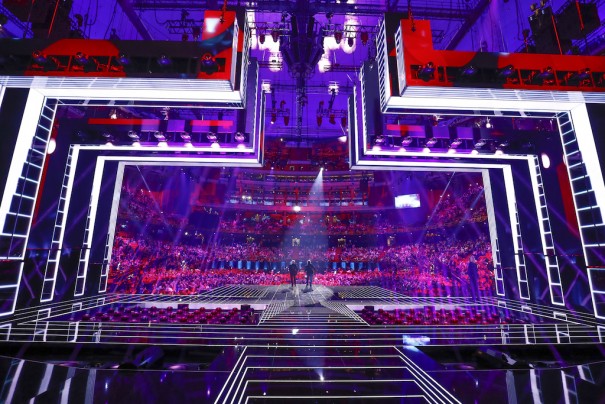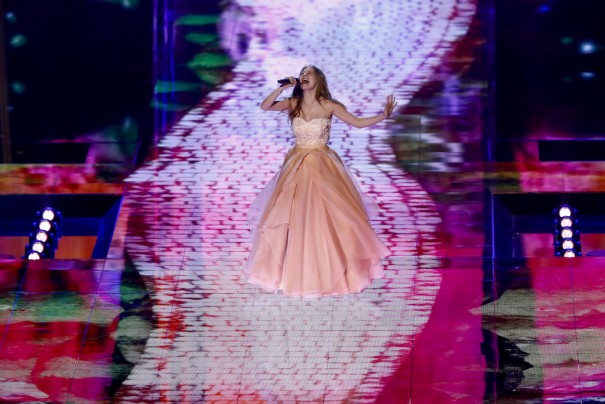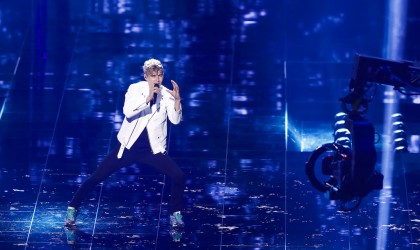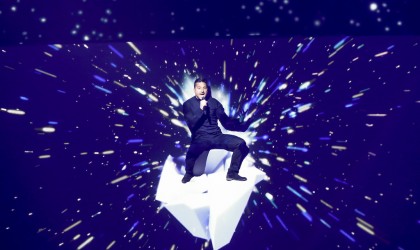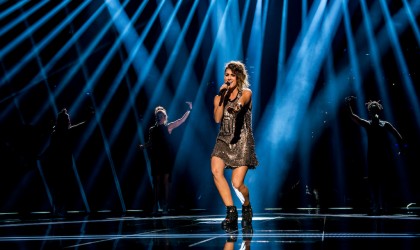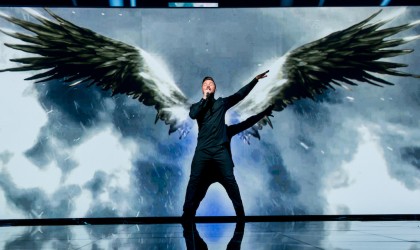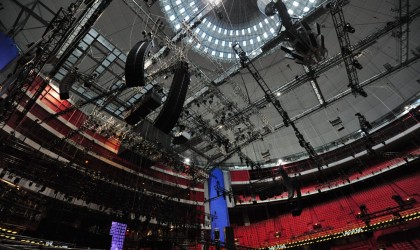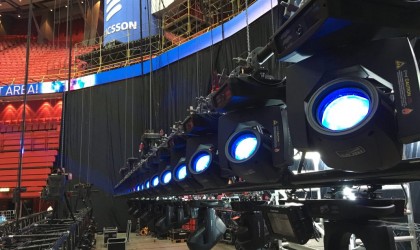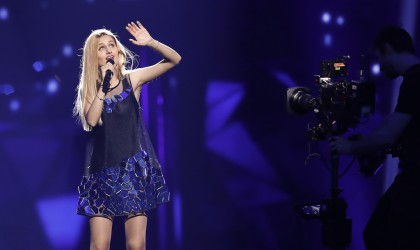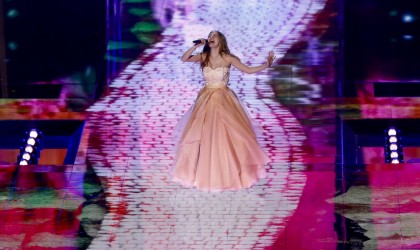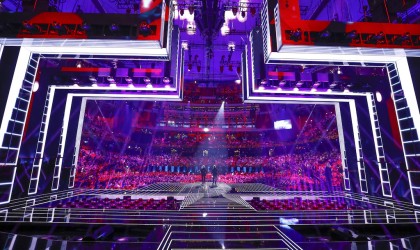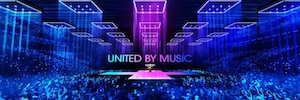La sueca SVT vuelve a subir el listón en la producción de espectáculos con el Festival de Eurovisión
La organización desplegó 600 metros cuadrados de pantallas LED en paredes y 250 m² en superficie creando una espectacular escenografía con ilusiones ópticas muy potentes que recogieron un total de 26 cámaras.
Seguido por una audiencia estimada en 200 millones de espectadores, el Festival de Eurovisión es, sin duda, el mayor espectáculo televisivo desde el punto de vista de la tecnología empleada en su producción. El pasado sábado, el Ericsson Globen Arena albergó la final de un festival en el que participaron 42 países.
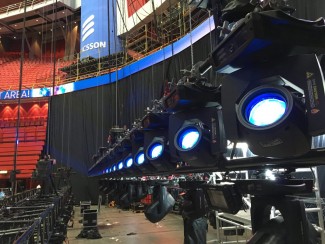 Partiendo de un presupuesto de 25 millones de euros, el festival ha generado siete horas y media de programación en directo gestionada por la Unión Europea de Radiodifusión (UER), organizadora del evento. Frente a lo que muchos piensan, el broadcaster anfitrión no corre con los gastos de la organización ya que ni siquiera las grandes corporaciones europeas como la ARD aleman o la BBC inglesa podrían hacer frente a un desembolso semejante. Es por ello, que los costes de producción se reparten entre el medio centenar de televisiones a la UER, si bien es verdad que lo hacen en diferente proporción. En este caso, el broadcaster público sueco, tras organizar las ediciones de 2000 y 2013, ha demostrado cómo manejar un presupuesto de tal calado de forma magistral.
Partiendo de un presupuesto de 25 millones de euros, el festival ha generado siete horas y media de programación en directo gestionada por la Unión Europea de Radiodifusión (UER), organizadora del evento. Frente a lo que muchos piensan, el broadcaster anfitrión no corre con los gastos de la organización ya que ni siquiera las grandes corporaciones europeas como la ARD aleman o la BBC inglesa podrían hacer frente a un desembolso semejante. Es por ello, que los costes de producción se reparten entre el medio centenar de televisiones a la UER, si bien es verdad que lo hacen en diferente proporción. En este caso, el broadcaster público sueco, tras organizar las ediciones de 2000 y 2013, ha demostrado cómo manejar un presupuesto de tal calado de forma magistral.
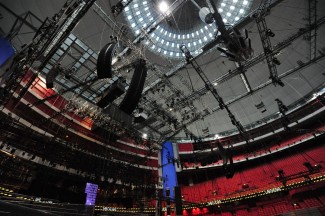 El Ericcson Globen Arena, donde tuvo lugar el festival, es un espacio singular con capacidad para más de 16.000 personas en un recinto con una impresionante altura de 85 metros (de la que SVT sacó buen partido durante la retransmisión ofreciendo imágenes cenitales desde lo más alto del recinto gracias al uso de cámaras spider).
El Ericcson Globen Arena, donde tuvo lugar el festival, es un espacio singular con capacidad para más de 16.000 personas en un recinto con una impresionante altura de 85 metros (de la que SVT sacó buen partido durante la retransmisión ofreciendo imágenes cenitales desde lo más alto del recinto gracias al uso de cámaras spider).
Un total de 250 profesionales trabajaron día y noche en el Globe Arena de Estocolmo para desplegar un impresionante escenario en el que la luz, el vídeo y el audio fueron protagonistas.
Desde el pasado mes de septiembre un extenso equipo de producción al mando de Ola Melzig, director técnico por duodécima vez consecutiva, diseñaron minuciosamente sonido, iluminación, pirotécnica, vídeo, suministro eléctrico, automatización y escenografías.
Apuesta por el LED
Desde que en 2009 Moscú apostará por el uso del LED, recurriendo en su día a un tercio de las pantallas disponibles para alquiler en todo el mundo, la iluminación a base de diodos protagoniza año tras año la escenografía.
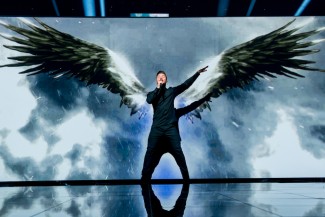 En este caso, el uso del LED permitió crear ilusiones ópticas muy potentes. Frente al ya tradicional uso de curvas suaves en la escenografía, este año se apostó por la linealidad y planos angulares.
En este caso, el uso del LED permitió crear ilusiones ópticas muy potentes. Frente al ya tradicional uso de curvas suaves en la escenografía, este año se apostó por la linealidad y planos angulares.
Para ello, el festival desplegó 600 metros cuadrados de pantallas LED en paredes y 250 m² en superficie. Para la iluminación se emplearon un total de 1.500 luminarias, 400 más que en la edición celebrada en Suecia en 2013 (Malmö).
El LED no solo invadió el escenario, sino todo el recinto ya que la organización repartió entre los asistentes collares con luz que brillaban en diferentes colores según la actuación.
Todo cuanto sucedió en el escenario fue captado por 26 cámaras, incluyendo varias cablecams, spidercams, steadies y robóticas en un alarde tecnológico sin parangón en una noche en la que venció la representante de Ucrania, Jamala, con su canción 1944.
[youtube]https://www.youtube.com/watch?v=P11j3HQumzY[/youtube]
Gallery
(click on any photo to start carousel -scroll to the right and left by clicking on the arrow-)
Did you like this article?
Subscribe to us RSS feed And you will not miss anything.
• Section: Lightning, PA Featured (Main) AM, PA Spotlight (Main) EN, TV Production



